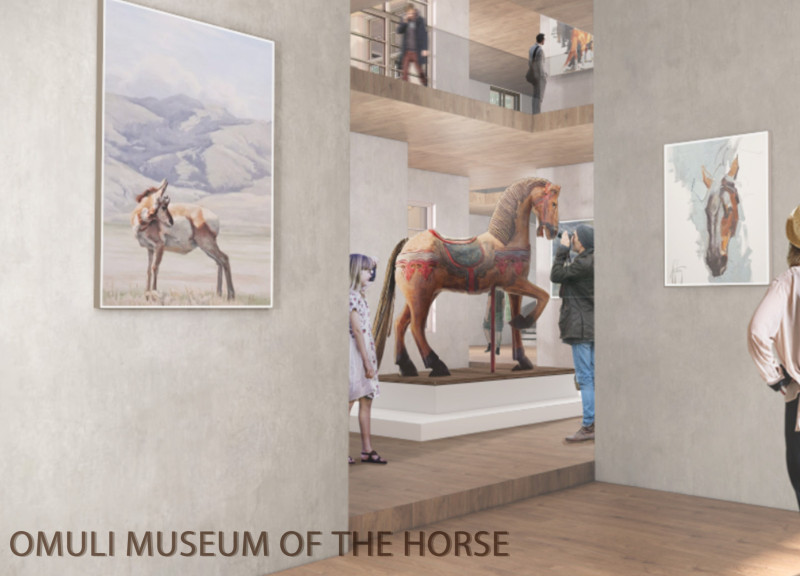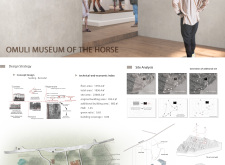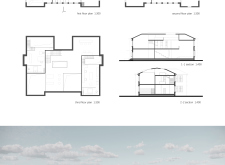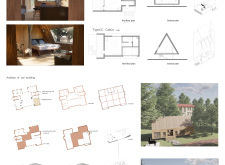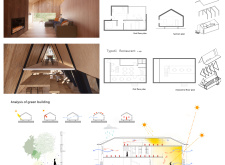5 key facts about this project
The Omuli Museum of the Horse is located in the Aucupis-Ergeme Parish of Naukseni-Omuli. It aims to support the artistic community by offering dedicated spaces for artists, along with a public museum that engages visitors with exhibitions. The design concept reflects a blend of historical preservation and modern function, creating a relationship between existing structures and new additions.
Design Concept
The museum features traditional elements, particularly its triangle roof, which connects with local architectural styles. This choice respects the historical context while providing a familiar shape that fits well within the landscape. The design allows the building to maintain its sense of place while accommodating contemporary needs.
Phased Approach
The project is organized into three phases that allow for gradual enhancement. Phase 1 focuses on providing workspaces for artists, encouraging creative expression in a dedicated environment. Phase 2 adds living spaces, enabling artists to work and reside in close proximity. Phase 3 introduces the Museum of the Horse, which promotes cultural engagement, making it a gathering point for community interaction.
Site Organization
Covering a total area of 1836.4 m² on a site of 23666.2 m², the museum was initially 954.4 m² but has been expanded to include an additional 882 m². The planning considers a Floor Area Ratio (FAR) of 1.35 and a green ratio of 0.65. This organization of space includes various functional areas such as a reception center, parking, and settings for public art. This arrangement ensures a logical flow between private artist spaces and public areas.
Materiality and Craftsmanship
The design highlights the importance of craftsmanship, particularly through the use of wood. Flexible independent houses are created for artists who specialize in wood carving, merging traditional skills with modern design. Natural wood elements are woven throughout the museum, fostering a connection to the surrounding environment.
In the exhibition area, large windows provide natural light and views of the countryside. This design choice enhances the artistic experience and emphasizes the relationship between art and its natural context. The environment adds to the overall atmosphere, ensuring that visitors feel connected to both the museum and the landscape it occupies.


